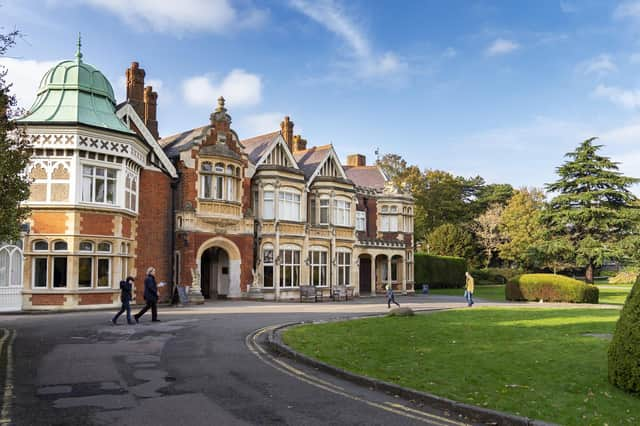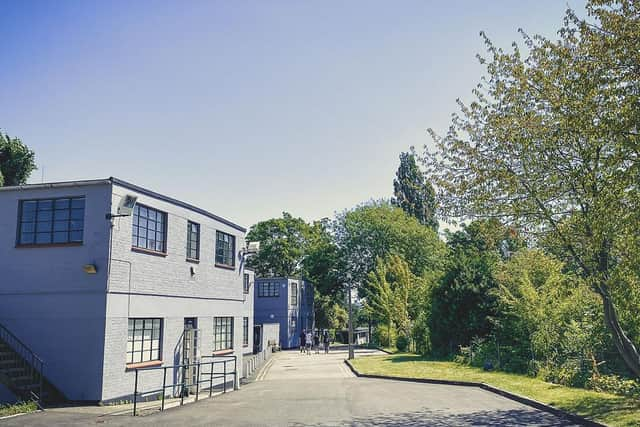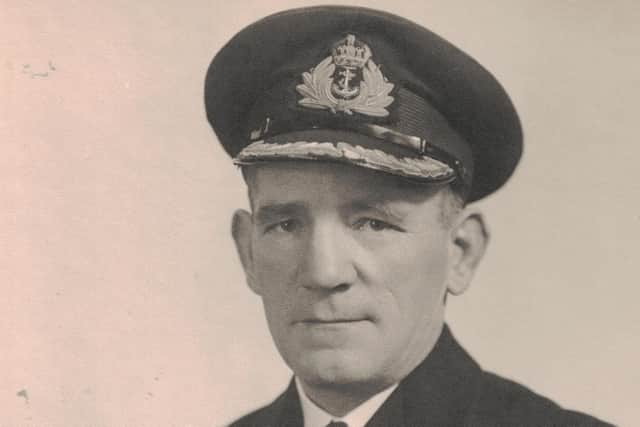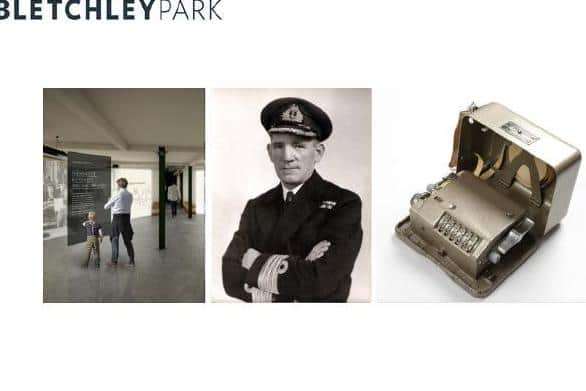Bletchley Park yields even more secrets from the unsung WWII heroes


History journalist Andrew Southam considers current exhibition revealing code-breaking men – and many women – who laboured to decrypt Enigma variations.
A new Intelligence Factory exhibition housed in wartime Block A, never seen by the public, currently reveals Bletchley’s immense activity and new unsung characters.
Advertisement
Hide AdAdvertisement
Hide AdNavy commander Alistair Denniston, an Olympic hockey bronze medallist and First World War code breaking veteran, quickly spotted Hitler’s intensions.


He searched for a new home for Britain’s cryptographers called the Government Code and Cipher School (later GCHQ).
He had MI6 purchase a Victorian estate in Bletchley with fast rail connections to London and close to Oxford and Cambridge universities.
MI6 boss Sir Hugh Sinclair even used £6,000 of his own money given government cutbacks. Code breakers started working there in 1938.
Advertisement
Hide AdAdvertisement
Hide AdDenniston recruited top Oxford and Cambridge university brains ... "men of the professor type".


These included mathematics giants Gordon Welchman, son of the Bristol archdeacon, and Alan Turing, who was not only a boffin but possessed Olympic running form. This eccentric also warded off hay fever by wearing gas masks to work, scaring the locals who feared an air raid!
Many others included John Cairncross, a literary scholar later accused of treachery as "The Fifth Man" for passing secrets to the Soviet Union.
James Bond writer Ian Fleming sometimes visited as a naval intelligence boss. (James Bond later called a code machine "Spektor" in "From Russia with Love".
Advertisement
Hide AdAdvertisement
Hide AdChurchill beefed up the operation in 1942 when Turing and four others appealed for better resources. "Action this day" the Prime Minister told his civil servants.


Denniston’s deputy, commander Edward Travis, took over operations and naval captain Alan Bradshaw managed administration. These little known chiefs made the difference, reorganising the station with Turing.
Travis eventually helped forge 1943 UK-US intelligence, sharing arrangement still running today with an 80th anniversary next year.
Bradshaw, a gruff Ulsterman, sometimes menacing but capable of charm, managed near impossible resource demands.
Advertisement
Hide AdAdvertisement
Hide AdStaff wanting more supplies and materials faced a stiff test. If they withstood Bradshaw’s colourful naval language and held their ground under scrutiny, their request had reasonable prospects!
Travis and Bradshaw oversaw a massive operation between 1942 to '45 with some 9,000 staff working in close proximity. Some three quarters of them were women, mostly well-educated with "good" backgrounds, some debutantes, young ladies of high society.
These "Bletchleyettes" played a leading role decoding, translating and searching for clues using a cross-referencing system of two million cards per week!
Prominent women included mathematician Joan Clarke, a top code-breaker and Turing’s close friend. Bletchley staff enjoyed themselves, letting off steam through tea dances, theatrical performances on local stages and various clubs from fencing to Scottish dancing, including baseball with American code-breaking colleagues. Romances happened, staff nicknaming Bletchley "Golf, Cheese and Chess Society".
Advertisement
Hide AdAdvertisement
Hide AdBut their work changed the war! Germany passed secrets to its army, navy and air force through the Enigma device, a typewriter-looking machine with 158 million, million, million different codes!
Poland built a replica Enigma to read these codes until Germany tightened them by changing the cipher system every day.
Turing improved the Polish work with British device "bombe" cracking German air force codes. Welchman then increased the bombe’s performance.
Bletchley decoded the first German message in January 1940. Decrypted information helped the Dunkirk rescue. German naval codes proved tougher. D-day landings were not possible until the allies won the Battle of the Atlantic. Unseen German submarines (U-boats) sank 3,500 supply ships, killing thousands of merchant seamen.
Advertisement
Hide AdAdvertisement
Hide AdThe Royal Navy captured a U-boat complete with Enigma machine and code book which, combined with another Turing innovation, helped Bletchley break German navy codes a year later. Merchant ships could now evade their silent pursuers!
Turing also cracked an updated German machine passing secrets between their high command, which Bletchley named "Tunny". Britain soon learnt what Hitler was telling his generals over dinner.
Controlled information was passed to the Soviet Union, helping them with major battles. However, traitor Cairncross also secretly passed the Russians information.
Details of Turing and Bletchley’s work was dramatised in 2014 film The Imitation Game, starring Benedict Cumberbatch, based on Andrew Hodges’ 1983 biography "Alan Turing: The Enigma".
Advertisement
Hide AdAdvertisement
Hide AdThe Intelligence Factory shows Bletchley’s growth from a few people working in a water tower to thousands of staff and hundreds of bombes cracking two codes every minute, deciphering everything from German police messages to details about that country's rail networks. Decryption centres had sprung up in India, Australia, Egypt, Malta, Sri Lanka, and Kenya.
Bletchley also used the world’s first modern computer called "Colossus" to help break the "Tunny" messages.
Block A, home to the exhibition, managed naval intelligence, interpreting intercepted messages - anything as simple as weather reports - to plot vessels around the world and defeat U-boats menace.
Every war year took around eleven million lives. Ending the war early may have saved 20-odd million people.
Advertisement
Hide AdAdvertisement
Hide AdThe Code and Cipher School became GCHQ in 1946, moving to new London premises then relocating to Cheltenham.
Travis headed new GQHQ. Bradshaw worked for Foreign Office, supposedly writing about being "damned glad" Bletchley’s administrative burden had stopped. He’s yet to receive full recognition. Exhibition, running to April 28 2023, also updates intelligence work with tackling cyber crime today. Full details available at https://bletchleypark.org.uk/event/the-intelligence-factory/ site.